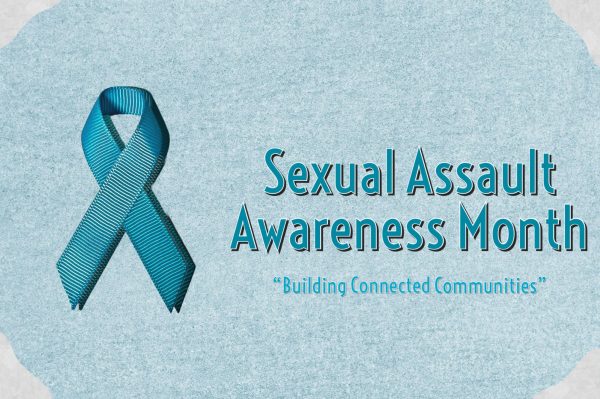The CEO vs the climate.
December 11, 2020
Imagine you were told to go inside your local supermarket and pick out one of two different dishwashing soaps, one which was the regular soap you used and one which was labeled as “environmentally friendly” with “plant-based” and “all-natural” additives. Which one would you user Think about how many times you’ve come across a brand you thought was “better” and more beneficial for our earth, just because of the pretty moss green packaging and cardboard cover.
In a world where people are busy and want to help the environment, buying these products seems like the perfect way to do their part. It’s fast and easy. We live in a world where everyone is moving around. We are built on a society of consumer-based activism, or so it seems. Buy this to help the children. Buy this to find the cure to world hunger. The planet is warming. People are dying at the cost of wildfires. Carbon emissions are increasing. It seems as if humans are the cause of why the environment is worsening. This brings it to people in brand name companies, companies that are the mass-producers of waste. Waste that contributes to global warming. When companies like Huggies, H&M, and Tide see that our environment is crumbling and that we consumers really want to help, the connection becomes their master plan. Our curiosity is really just their jackpot for cash. So when does innocent curiosity about helping the environment become an advantage for the big companies? Who do the actions we think are helping the wildfires on the west coast and the melting ice caps actually help – the CEO or the climate?
To figure out why greenwashing is inherently malicious, we need to look at the meaning of greenwashing ,Justin Hildebrand, a marketing teacher at Clayton High School says, “It’s a face value, like here’s what we are showing you; but in reality, our carbon footprint is actually growing in size.”
Greenwashing was first coined in 1986 by environmentalist Jay Westerveld, in response to advertising that Bruce Watson of The Guardian describes as enabling companies “to present themselves as caring environmental stewards, even as they were engaging in environmentally unsustainable practices.”
With the new introduction of the green movement among young generations such as Gen Z and millennials, companies are adapting to our ever-changing environment and our perspectives on the world.
“Companies are more likely to shed a light on the positive things they are doing and try to ignore the negative things. As a consumer, you are way more likely to purchase something that you like or that you think is a good company,” said Hildebrand.
Even brands such as Phillip Morris, one of the largest tobacco companies have been doing it for ages. The company has run anti-smoking and anti-tobacco ads because of its positive effect on consumers.
“Public relations will create something saying ‘Listen, we sell this stuff but we don’t think you should actually use it. Which is hypocritical because they are selling you the tobacco products.’”
So the stitch is if you tell people that you are doing something to combat the negative effects of your own products, people will be more likely to buy from your company because of its progressive standpoint.
Hildebrand adds, “I think companies respond to whatever is in popular culture. If you know the environment is at the forefront of people’s minds…companies respond quickly to demonstrate they are on board with it.”
But we would never have these strategies without help from the lovely consumer. The consumer is what drives the profitability of certain companies. Every time you buy something, companies get a clearer picture of what their audience is. A business wouldn’t be successful without consumer research.
It’s (greenwashing) short term because we have an educated market out there. As consumers, they understand more of what that means and they have become more sensitive to environmental issues
— Carol Johanek
“It’s (greenwashing) short term because we have an educated market out there. As consumers, they understand more of what that means and they have become more sensitive to environmental issues,” said Carol Johanek, a business-marketing professional and lecturer at WashU. “What you don’t want from a business standpoint is for customers to see you as being deceptive in any way, shape or form”.
Johanek mentions the shampoo bottle example. If 100% of your bottle is biodegradable, it’s going to cost the consumer more. Companies can easily market a shampoo bottle that is 80% biodegradable and label it as 100% biodegradable. But the customer can’t tell that. But greenwashing goes even further than that. It’s more than just a simple change of percentages on the final piece.
How do companies figure out who their consumers are and how is greenwashing so successful in product-marketing?
“The message of greenwashing in Gen Z, Y, and X resonates with them. Because those generations are more involved with the environment. Companies want to be saying the right thing. They want those generations to hear it, because those generations align themselves more than any other generation. The both of them (Gen Y and Z) lean towards brands that are responsible corporately and socially responsible. That can make a difference between someone saying I want to buy L’Oreal versus some other shampoo. L’Oreal knows that. And so, they want everyone to know that. Loreal could write something ( a grant to an energy plant), but it’s not going to get the same brand association that they want the people buying their products to know” said Johanek.
Marketing tricks such as greenwashing are discreetly placed by specific customer research. Databases called psychographics define the people who are buying a specific product. Some factors include where consumers live and their shopping attitudes.
“That’s how we know if they are concerned about the environment. What products do they user Do they only use products that are recyclable or biodegradable? We have a lot of data on who is purchasing that particular product,” said Johanek.
Does this apply to people in their 70s and 80s? Not as much as people in their 20s and 30s. The issues of greenwashing will not come up in the later generations, simply because the people in that group are not involved in green-issues much.
Greenwashing is a blatant way to be more deceptive and sneaky to your market. As a generation enraged by blatant disregard for environmental issues and new topics concerning environmental impact such as how it affects marginalized groups (especially communities of color who are directly and indirectly affected by natural disasters. For example, Hurricane Katrina disproportionately displaced neighborhoods of color). The newest generations such as Generation X and Y are strongly advocating for environmental change and environmental justice.
“This comes back to the short term business (of greenwashing). You have a dissatisfied, disgruntled person who is in the younger generation. Because environmental issues are the most recently valued all over social media. It’s a short-term way to attract customers; long term it can be damaging. Younger generations are already distrustful of a lot of the large corporations that behave very poorly,” said Johanek.
Does “green-marketing” actually work in shaping people’s trust in products labeled as environmentally friendly?
“It’s hard to tell. Unfortunately, people believe what they see on Facebook and social media. Not as many people do their due diligence and enough research to really learn the truth. This is the power of marketing in any spectrum; whether we are talking about politics, media, business, whatever it is. People believe what they read and see online,” said Hildebrand, ‘The advertising rules are so relaxed; that if you proved that you didn’t have malicious intent, you can pretty much advertise essentially whatever you run however you run”.
This sets an increasingly dangerous tone for consumers everywhere. It creates something called brand loyalty. Once you have a perception of a company projecting progressive ideals on environmental issues, for example, you will most likely continue to shop with them. Westinghouse Nuclear is a good example of how you can advertise anything you want essentially in marketing. You just need a believable case.
“(Consumers) will say if you’re doing these few good things. I don’t really care what else you’re doing because look at how awesome a company you are, look at how many positive initiatives, looking at how much you’re doing to help the environment in this one area, so you must be doing that across the board and so people don’t question people don’t challenge, and a company, especially a large company that has a lot of power and influence may do the bare minimum when they maybe should be doing more,” Hildebrand said. “But there’s no public pressure, there’s no political pressure for them to improve because we live in a capitalistic society, and especially publicly traded companies, they need to make money, and they are beholden to their shareholders and their board, and they will do as little as they will spend as little money as possible as long as they can maximize profits”.
We live in a capitalist society where making the most money is most desirable; but we also live in a place where problems like climate change and waste need to be confronted with a solution. Many companies see the juxtaposition of the two, but also some similarities. Businesses will do the bare- minimum to get consumers hooked on their “master plan.”Hook the consumer’s mind but get their money as well.
To dive deeper into the meaning of brand loyalty, you could look at the psychological aspect. Let’s take a look at the Milgram experiment, for instance. Stanley Milgram, a psychologist at Yale University, conducted an experiment done to test the willingness of numerous participants to obey certain orders that conflicted with their personal conscience. The purpose of this experiment was to understand why many Germans were particularly obedient to authority figures as this was a common explanation for Nazi atrocities in World War II.
The experiment was set up, so there were two people. The participant would be paired with another person. There would be two rooms set up; one for the experimenter and one for the participant. The two participants would draw a straw to determine roles; learner or teacher. The learner would be strapped down to a chair with electrolytes. The learner learns a list of word pairs. The teacher would then test the learner on the words and shock the learner if he answered one of the questions. The teacher would often shock the learner for giving right answers; and often the learner would continue to obey the instructions ordered by the teacher. There were over 30 switches on the shock generator, marked from 15 volts to 450 volts. The teacher would ask the learner if they would want to continue on for 4 prods. The four products were ordered “Please continue”, “ This experiment requires you to continue”, “It is absolutely essential for you to continue”, and “You have no other choice but to continue”. Milgram’s experiment resulted in 65% of it’s learners continuing to the highest level of 450 volts,
Although this experiment was proved unethical for its lack of controlled variables such as higher stress levels due to the closed in environment of the lab. Also the participants were all cisgender men, which raises questions if it applies to cisgender women. There is still information gathered from Milgram’s experiment that can apply to consumer obedience.
If we were to take a look at how many products we succumb to out of pure convenience; it could be guaranteed that at least half of those products are being marketed with greenwashing. In fact, we can’t talk about greenwashing without talking about psychological perspective.
“My very first boss is a clinical psychologist and I didn’t understand it for a while. And one time I asked her, she stayed in marketing research, and what are people’s thoughts on how they make decisions. How does a 20 year old make a decision on a bottle of shampoo versus a 30, 40 or 50 year old. That is the money that companies and brands spend millions on trying to figure out, Once we get it. Then we can advertise it, and then we know where to go” said Johanek.
In the end, we must look closer to see how we are being deceived. We are the generation that can have the biggest impact on the world. We can change the impact of capitalism and greenwashing on society as a whole if we take bigger steps. That includes not turning a blind eye to the media we consume and confronting the companies who do this.
“I feel like there are a lot of people who want to be more environmentally friendly, but also don’t want to do their research. So companies doing this (greenwashing), takes away from people who could really be helping the environment… I think it’s definitely the company’s fault” said Clayton High School sophomore Avie Mallon.
I feel like there are a lot of people who want to be more environmentally friendly, but also don’t want to do their research. So companies doing this (greenwashing), takes away from people who could really be helping the environment… I think it’s definitely the company’s fault
— Avie Mallon
As the weather gets brisker and online shopping carts start filling up, brands that actually help the environment need to be given more attention. If you are looking for clothes, Pact Clothing is a fashionable company to buy from. The brand is sourced with organic and affordable pieces. Some other brands include Patagonia, Mara Hoffmann and Tonle. ipGreen America, a website that showcases different sustainable brands all in one place with multiple different household items and creates daily updates on news in the green-company community. Mother Earth Living is also a good household and cleaning company. You can also learn more about a company’s intentions with their green-marketing if the product has earned the regulations. For clothes, does it have the Fairtrade certification?Are the dyes and color processes used in non- toxic manufacturing facilities? Does the company have the Global Organic Textile Standard (GOTS) and the OEKO-TEX standard listed? You as a customer have the right to question the authority.
This holiday season, the marketing of gifts and new appliances are going to be evermore available. Environmental issues like climate change and pollution are prevalent in politics and streamed into social justice. What does this mean for the future generations? Are we going to continue to let environmental activism be a pawn for the CEO’s checkmate? Think of a chess game. We as a society need to be a queen. The queen in chess has the most power to strike out any piece on the board. The CEO is the rook used to knock down our queen, without the queen we are powerless. Together we need to stand up to big companies and hold them accountable. It’s your choice. Help the CEO or help the climate?
This story was originally published on The Globe on November 30, 2020.



























![IN THE SPOTLIGHT: Junior Zalie Mann performs “I Love to Cry at Weddings,” an ensemble piece from the fall musical Sweet Charity, to prospective students during the Fine Arts Showcase on Wednesday, Nov. 8. The showcase is a compilation of performances and demonstrations from each fine arts strand offered at McCallum. This show is put on so that prospective students can see if they are interested in joining an academy or major.
Sweet Charity originally ran the weekends of Sept. 28 and Oct. 8, but made a comeback for the Fine Arts Showcase.
“[Being at the front in the spotlight] is my favorite part of the whole dance, so I was super happy to be on stage performing and smiling at the audience,” Mann said.
Mann performed in both the musical theatre performance and dance excerpt “Ethereal,” a contemporary piece choreographed by the new dance director Terrance Carson, in the showcase. With also being a dance ambassador, Mann got to talk about what MAC dance is, her experience and answer any questions the aspiring arts majors and their parents may have.
Caption by Maya Tackett.](https://bestofsno.com/wp-content/uploads/2024/02/53321803427_47cd17fe70_o-1-1200x800.jpg)
![SPREADING THE JOY: Sophomore Chim Becker poses with sophomores Cozbi Sims and Lou Davidson while manning a table at the Hispanic Heritage treat day during lunch of Sept 28. Becker is a part of the students of color alliance, who put together the activity to raise money for their club.
“It [the stand] was really fun because McCallum has a lot of latino kids,” Becker said. “And I think it was nice that I could share the stuff that I usually just have at home with people who have never tried it before.”
Becker recognizes the importance of celebrating Hispanic heritage at Mac.
“I think its important to celebrate,” Becker said. “Because our culture is awesome and super cool, and everybody should be able to learn about other cultures of the world.”
Caption by JoJo Barnard.](https://bestofsno.com/wp-content/uploads/2024/01/53221601352_4127a81c41_o-1200x675.jpg)













